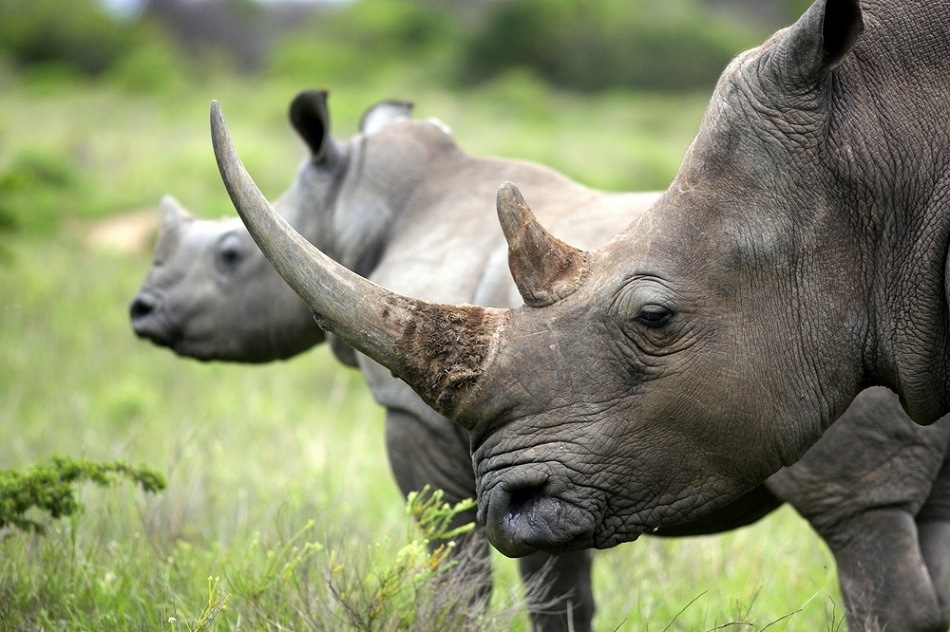Sep 20 2017
IBM, MTN, a key African telecommunications provider, Wageningen University (WU) in the Netherlands and Prodapt, recently announced they are incorporating IBM Internet of Things (IoT) technology as part of the MTN Connected Wildlife Solution.
 JONATHAN PLEDGER/ Shutterstock.com
JONATHAN PLEDGER/ Shutterstock.com
The solution will help in predicting threats and fight the poaching of endangered rhinos at Welgevonden Game Reserve in South Africa, with the intent in order to expand the solution to other reserves in future.
South Africa is presently considered to be home to more than 70% of the world's remaining rhino population. Conservationists are fighting to protect the deteriorating number of these iconic animals that are being killed for their highly-prized horns. More than 7,000 rhinos, over the past decade, were killed all over the African continent, and in 2016, reports point out that 1,054 were killed in South Africa alone.
One of our primary objectives is to protect wildlife, especially endangered species. We were looking for a solution that would help us better understand possible threats and weed out those coming from poachers so we can react ahead of time and prevent harm to animals. This project will be a profound breakthrough in the creation of connected wildlife solutions, a wildlife management concept that aims to harness IoT technology to better manage and protect wildlife and other assets.
Bradley Schroder, Chief Executive Officer, Welgevonden Game Reserve
This new predictive capability develops from research carried out by Wageningen University. The university, ranked the best in the Netherlands for 12 straight years, features an animal sciences group concentrating on education and research related to the welfare and health of people and animals. According to research performed on Welgevonden Game Reserve, prey-animals in the wild react in varied ways, based on the kind of threat they meet and the supposed danger from predators such as leopard and lion or the presence of people in the area.
This research has been incorporated with MTN’s Connected Wildlife Solution which influences IBM’s IoT technology and the University’s predictive analytics in order to develop an innovative solution that offers game reserves a powerful new tool in the battle to save endangered species. Protecting the rhinos commences with fitting collars made up of custom sensors onto prey-animals including impala, eland, wildebeest and zebra, which will transfer data about their behavior to the IoT platform.
The data collected from the LoRa sensors is then communicated through the LoRa WAN Network Server (LRSC - Long Range Signal and Control) and backhauled over the MTN 3G/4G network.
The solution, through the platform, gathers animal location information, direction, movement and average speed of travel, along with other data. Wageningen University uses the data to develop almost 20 rule-based patterns based on the animals’ response to threats. Due to this, animals like zebras will behave as sentinels with their response patterns becoming an early warning system to protect the rhinos.
The predictive nature of this solution removes the dependence on game reserve teams to be in the correct place at the right time, or to respond to events, such as the distant sound of gunfire; and the teams can indeed take proactive action that helps keeps rhinos safe.
Over the years, we have seen that animal tracking technology has been used reactively in game reserves. Welgevonden needed a more proactive solution to take the fight to protect the rhinos further. With the solution designed for Welgevonden, MTN, along with our partners, can better predict and anticipate potential poaching activity. This allows the ranger to take pre-emptive action before any threat happens.
Mariana Kruger, General Manager, MTN Business
Welgevonden Game Reserve was selected for its specialist wildlife management expertise, its established research and development capabilities and also because of its exceptional excellent reputation in rhino protection. “Welgevonden is one of the best managed game reserves in the world and we need such skills to ensure the success of a project of this nature,” says Prof Herbert Prins of Wageningen University.
The Internet of Things is changing the way we live and work, and we are finding new applications for IBM’s IoT technologies in businesses across the spectrum. Now we're helping curb rhino poaching and preserve endangered species on the African continent. IBM's IoT solutions enable businesses to solve industry specific problems and transform their companies and industries.
Hamilton Ratshefola, Country General Manager, IBM South Africa
With hundreds of clients all over 22 countries, MTN is a developing innovator in the Internet of Things. MTN is developing an ecosystem of vertical partners and an ecosystem of more than three million active M2M connections. Together, all these connected devices, systems and sensors offer insight whilst solving real business challenges all over the continent.
IBM’s IoT technology is available with powerful cognitive computing capabilities that do not just gather and predict but also truly understand the relationships and patterns in the huge amounts of data being collected by the sensors in field. IBM is presently considered to be an established leader in the Internet of Things (IoT) with a growing ecosystem of more than 1,400 partners and over 750 IoT patents which together help in drawing actionable insight from billions of connected devices, systems and sensors around the world.
The aim in the future is to make this technology available for utilization at game reserves all over Africa and abroad.